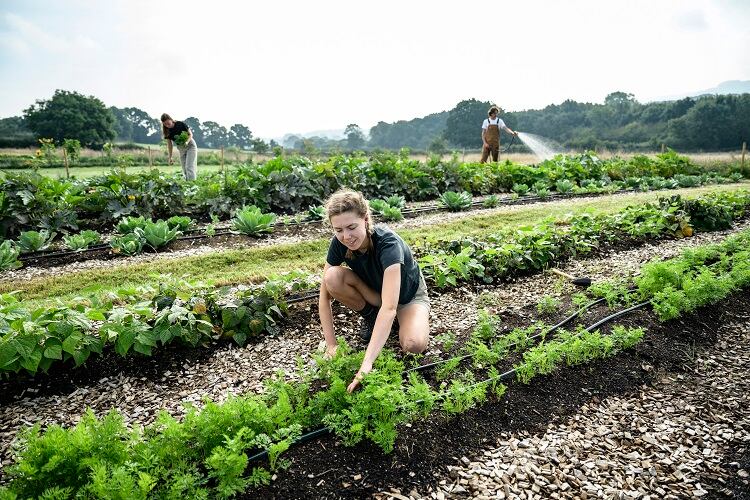There are many corporate definitions of regenerative agriculture. In fact, the Sustainable Agriculture Initiative (SAI), a group of major players in regenerative agriculture including Danone, PepsiCo and Unilver, recently released their own: “an outcome-based farming approach that protects and improves soil health, biodiversity, climate, and water resources while supporting farming business development.”
However, at an EU level – in other words, a legal level – a working definition of regenerative agriculture remains to be seen.
This, suggested a recent report by the Food and Land Use Coalition (FOLU), could be used as a cover for greenwashing, as if regenerative agriculture is not defined legally, it can be used to describe a range of practices.
At FoodNavigator’s Climate Smart Food Summit last month, we spoke about how regenerative agriculture might be defined, and how the way one approaches it is often deeply impactful on its eventual effect on the land.
Outcomes
Practices themselves, suggested Theodora Ewer, Program Manager for regenerative agriculture scaling programme Regen10 at FOLU, are far too dependent on geographical contexts to themselves define regenerative agriculture. A definition, if one were to exist, has to be drawn from outcomes.
“When we do come to a definition or alignment about what regenerative agriculture is, and what it can achieve,” she said, “we need to move away from practice-based definitions, because as we know agriculture is highly context-specific. A practice in one place might not lead to the same outcome in another place.
“So what we're trying to move towards is, given this lack of alignment around what the definition is, a focus on the outcomes, and a focus on what the outcomes of regenerative agriculture are.
“In addition to this, we really want to move away from a siloed approach, so we're not just looking at the biophysical, we're not just looking at soil health, we also make sure that we capture the socioeconomic elements of regenerative agriculture.”
Marie Ellul-Karamanian, program lead for Mondelēz International’s harmony program, its own sustainable agriculture programme, agreed that outcomes were a vital part of any definition.
“It needs to be holistic and it needs to be driven by outputs,” she said, “and I feel this is very much how we see it at Mondelēz International.
“For me, regenerative agriculture is a holistic approach to farming which aims to produce high-quality crops while also restoring the natural rhythm of our ecosystem,” she said, “and I really like the word 'restoring' because it means bringing us back to where nature always intended us to be.
“In a way, I think it's rebuilding a sort of fertility, it's improving carbon sequestration, it's protecting and enhancing biodiversity, it's fostering the economic wellbeing in the farming communities, so it's many different aspects, but all put together, it really brings forward this holistic approach which will help us to rebuild progressively nature like it always intended to be.”
A regional approach
Eric Heismeyer, VP and Chief Customer Officer for food solutions at Bunge, agreed with FOLU’s Ewer that contexts are vital when defining regenerative agriculture. This is important for Bunge, which operates in a range of regions globally. He argues that this makes a single definition hard to come by.

“We get the pleasure to operate in many different regions across the globe,” he said, “and different regions operate differently with regenerative ag. Europe obviously has regulations. If you come to the US, regenerative ag has many different definitions but has core practices that define it. In South America it can be very similar, or again very different.
“So we really focus on the regions that we operate in and what our customers really want from the farmers, all the way down to the consumers and their products. So having a one-size-fits-all view on regenerative ag is very difficult to do.”
Mimicking the biosphere
For Dr. Vincent Walsh, founder and head of innovation at RegenFarmCo, which focuses on scaling up regenerative agriculture initiatives, regenerative agriculture (or as Dr. Walsh prefers to call it, ‘regenerative design’) is about looking to the biosphere for inspiration.
“When I think about designing a complex ecosystem through regenerative design, it's about mimicking biospheric processes, period,” he said, “so there is a risk of greenwashing: putting six, seven, eight, nine, cover crops in a huge farm and calling it regenerative agriculture for me is a fallacy. It doesn't even come close to the kind of complexity we find in the biosphere.
“So when I think about regenerative design, it's a mimicking of the 3.8 billion years of processing, of R&D, of biological innovation that we've seen. And all we need to know is how to mimic that.”
Risks
Despite its noble aims, when the holistic approach is not taken into consideration, FOLU’s Ewer believes, environmentally damaging agricultural practices are still possible from regenerative agriculture programmes.
“We have to see regenerative agriculture or regenerative food systems in a holistic lens,” she said, “that takes into all of these crucial elements of sustainability or regeneration.
“We hear a lot of the risks of what happens if yield decreases. If you start doing practices that increases biodiversity that's excellent, but if for some reason the yield does decrease, that can lead to risk of further expansion into highly biodiverse lands, deforestation, and land conversion.
“So you need to think about regenerative agriculture in the lens of sort of all of the different components - of yield, of biodiversity, of deforestation - to really ensure that you don't have any of these risks.
“Losing any of the natural environment will ultimately come back to pose a risk to food production, and that loss of biodiversity, so we need to be really cautious that we do see it in this holistic lens. That will stop companies or others from acting in a way that is going to cause these other trade-offs that will occur in the system like deforestation.”



